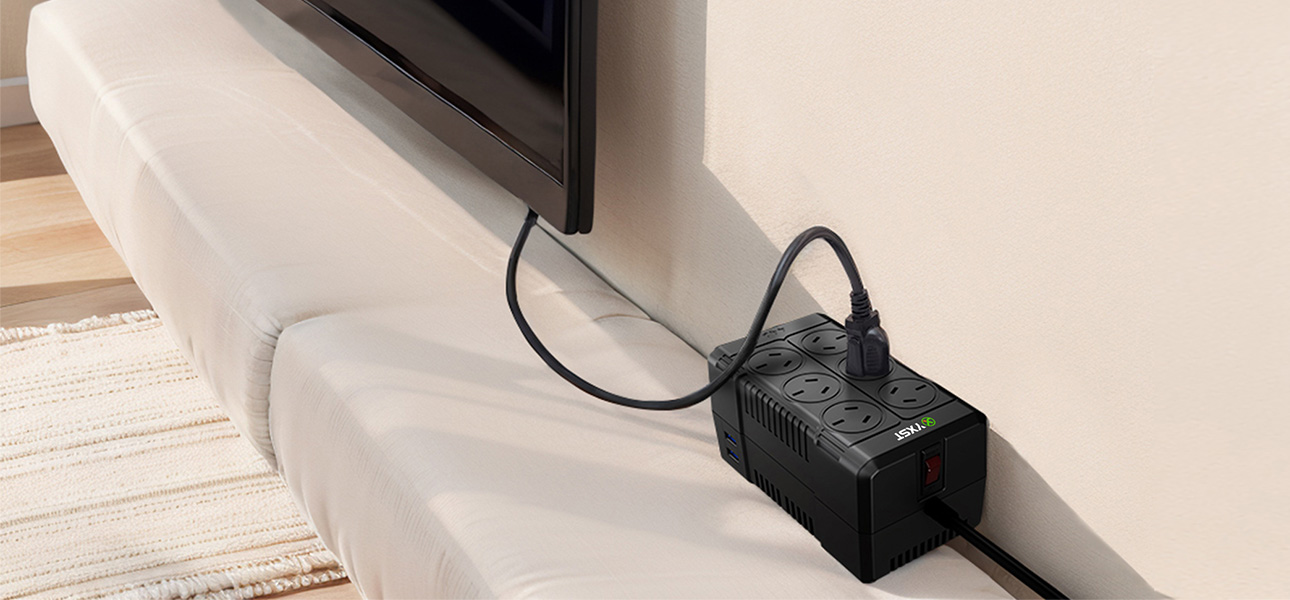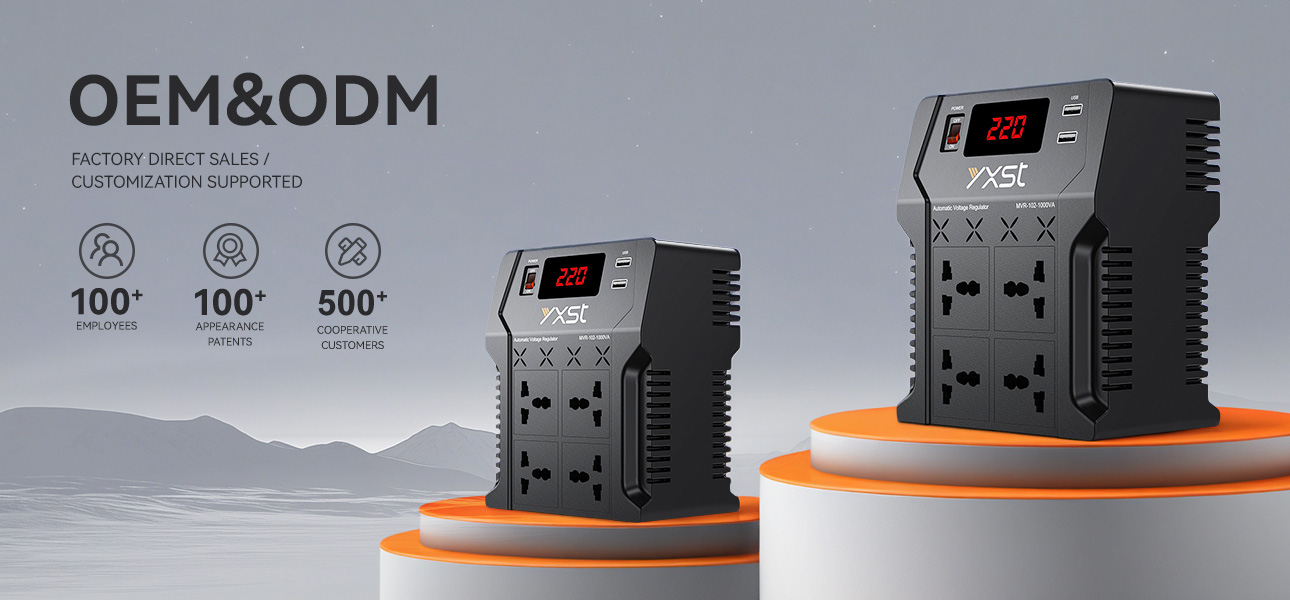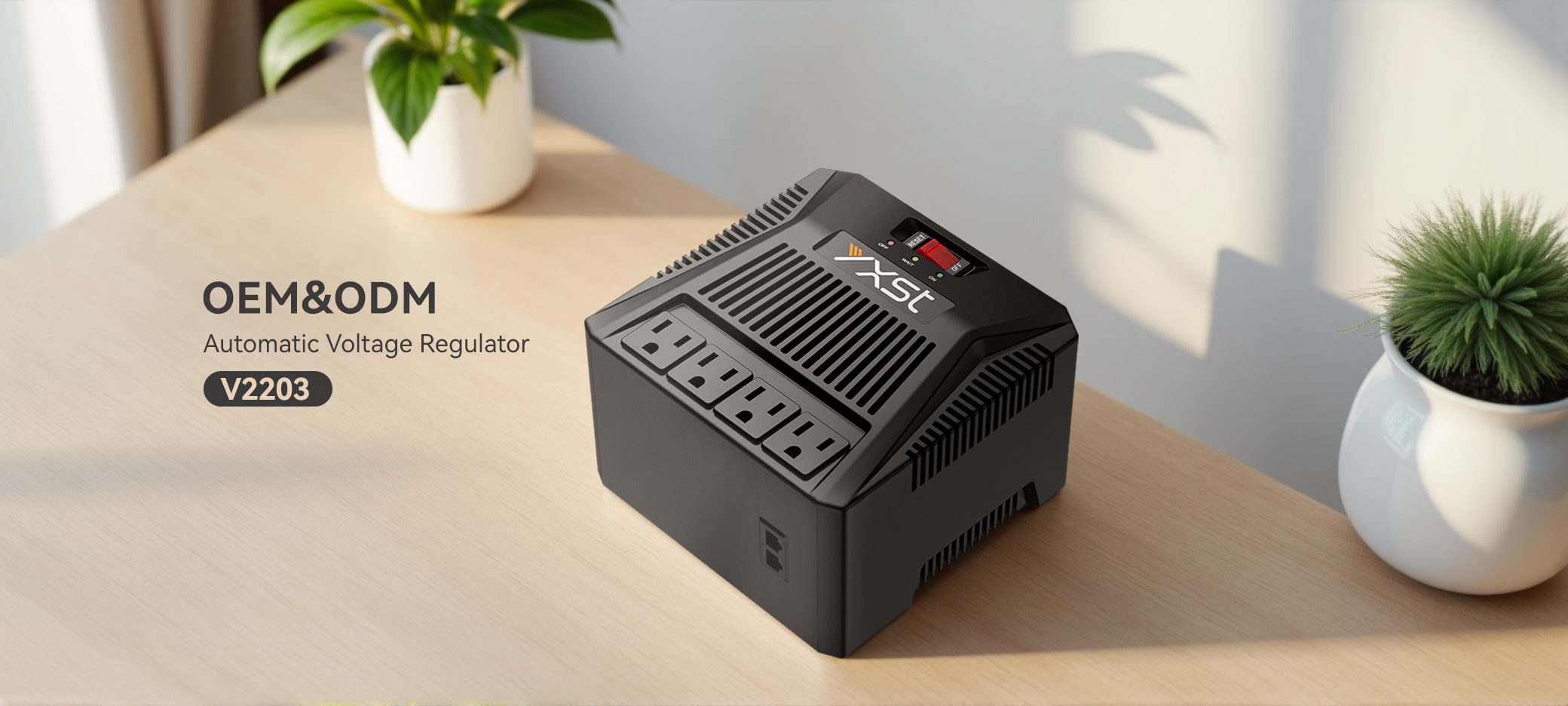Is voltage regulator socket the same as a surge protector?
Date:2025-01-19 Click:1075
(1) Functional aspects
Household voltage regulator sockets
Its main function is to stabilize voltage. In a household power environment, the grid voltage fluctuates due to various factors. For example, during peak power consumption periods, the voltage may decrease; while during low-peak periods such as late at night, the voltage may increase. Household voltage regulator sockets are like a "voltage housekeeper" that can stabilize the output voltage within a suitable range to ensure that the connected electrical equipment can work normally under stable voltage. For example, if electrical appliances such as refrigerators and washing machines in the homework in an unstable voltage environment for a long time, their motors and other components may age faster due to excessive voltage, or fail to start normally due to low voltage. Using voltage stabilizer sockets can avoid these situations.
Automatic Surge protectors
Its main function is to prevent power surges from damaging electrical appliances. A surge is a high-voltage pulse that appears instantly, like a sudden "electrical wave". This kind of surge is very common in households. For example, during thunderstorms, lightning may hit nearby power transmission lines, causing surges in the power grid. High-power appliances at home (such as air conditioners, electric water heaters, etc.) may also generate surges when they are turned on or off. Automatic surge protector is like a "surge shield". When such a high-voltage pulse occurs, it will quickly direct the excess current to the ground, thereby protecting the electronic components of the electrical equipment from damage. For devices with complex electronic components such as computers and smart TVs, using a surge protector can greatly reduce the risk of damage from surges.
(2) Working Principle
Home voltage regulator socket
Usually works through a transformer and an electronic control circuit. When the input voltage changes, the internal detection circuit senses the change. If the voltage increases, the voltage regulator socket may reduce the voltage by adjusting the transformer's turns ratio or using electronic components; if the voltage decreases, it will take the opposite measure to increase the voltage. Take a simple autotransformer voltage regulator as an example. It has multiple taps. When a voltage change is detected, the output voltage is changed by switching the taps so that the output voltage is stabilized in a range close to the rated value.
Surge protector
Its core components are nonlinear components such as zinc oxide varistors (MOVs). Under normal operating voltages, the resistance of these components is very high and has almost no effect on the circuit, just like a quiet "bystander". However, once the voltage exceeds the clamping voltage of the MOV (this voltage is generally set higher than the normal operating voltage for detecting surges), the resistance of the MOV will drop sharply and instantly become a "current channel" to guide the excess current generated by the surge to the ground, thereby limiting the voltage at both ends of the electrical equipment connected behind to a safe range.
(3) Application scenarios
Household voltage stabilizer socket
Suitable for electrical equipment with high requirements for voltage stability. For example, in some high-end audio equipment, the electronic components inside them are very sensitive to voltage stability. If the voltage is unstable, it may cause poor sound quality or even damage the equipment. There are also some small electronic devices, such as electronic game consoles, and home network equipment (routers, etc.), using voltage stabilizer sockets can provide them with a stable power supply environment and reduce the occurrence of equipment failures.
Electronic Surge Protector
Applicable to almost all household electrical equipment, especially those with complex electronic components. Once these devices, such as computers, TVs, home theater systems, etc., are hit by surges, their internal integrated circuits, chips, and other electronic components are easily damaged. Installing a electronic surge protector in the home distribution box, or using a small surge protection socket in front of the plug of the electrical equipment, can effectively prevent surges from causing damage to these devices.
(4) Switch aspect
Household voltage stabilizer socket
Some voltage stabilizer sockets have switches, which are mainly used to control whether the socket is powered on or not. When the appliance connected to the socket is not needed, the power supply can be cut off by turning off the switch to achieve energy saving and safety purposes. At the same time, when the voltage stabilizer fails or needs maintenance, the power supply can also be cut off through this switch for easy operation.
Single Phase Surge Protector
The single phase surge protector itself may also have a switch, but the main function of this switch is to detect whether the surge protector is working properly. Some single phase surge protector switches also have indicator lights. When the indicator light is on, it means that the surge protector is in normal working condition; if the indicator light is off or flashing, it may mean that the surge protector has a fault and needs to be replaced or repaired in time.
In general, household voltage regulator sockets and surge protectors are two different household power protection devices. They both play a very important role in protecting electrical equipment, but their functions and working principles are different, and they play different roles in household power safety and equipment protection.




